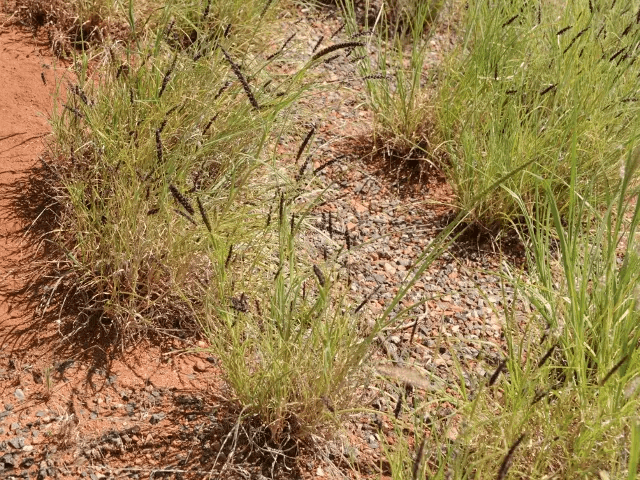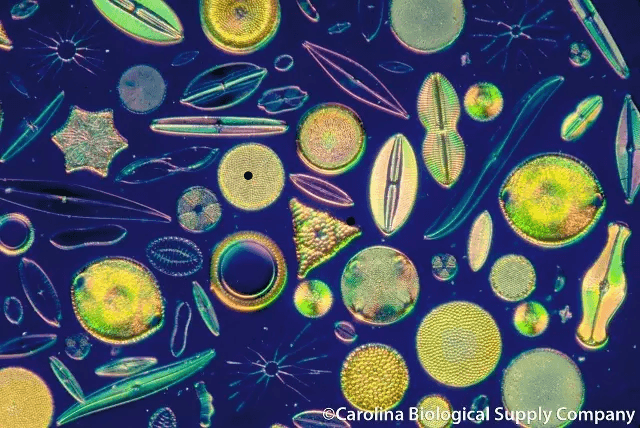
Hansika Chhabra
Ever noticed the seeds or fruiting bodies with pointy hooks that latch onto one’s clothes after a walk along a quiet road in spring? These are called burrs. More importantly, what do burrs atop Birdwood grass, and your kiddie white sneakers have in common? The design for Velcro.
Hooked seeds of a Burdock plant caught in the coat of George de Mestral’s dog, are said to have inspired him to design a novel type of zip fastener, leading to the invention of Velcro. A material used to keep two surfaces together has one side with thousands of hooks and another with thousands of loops, made often out of nylon.

Cenchrus setiger Birdwood grass road side western Queensland: wikimedia commons
Welcome to the world of biomimetics, where engineers and scientists design products inspired by nature. Abundant inspiration is available throughout the animal and plant kingdoms for new solutions.
The term “biomimetics” was coined by Otto Schmidt, a gadget and instrument inventor, most famously a widely used electronic circuit component was awe-struck by the electrical signals of squid nerves. For his PhD, he created a device that mimicked the action potential, a characteristic nerve signal, to model and probe into the origin and spread of electrical signals. Otto continued to study the action potential for much of his career, with ideation of biomimetics towards the end. Read more about Otto Schmidt here.
Other related terms include biophysics – the study of problems in biological sciences from the viewpoint/approaches of physical sciences; and bionics– development of physical or composite material by examining biological phenomena.
Numerous inventions have been developed via biomimetic approaches in the past few decades. Did you know that the unique glow of diatoms, single-celled plant-like microorganisms, is being used to develop ‘green’ make-up products and paints? Their quick growth and proliferation time makes it easy to grow millions of them overnight in a lab. When light is shined on them, their outer coat reflects it beautifully, changing colours as light angles change. Their outer coat is enamoured with silica and can be made to change in shape, size and form, by growing them in different conditions. This changes their reflective properties! This character may possibly be exploited to create new materials well-suited for sensors and chips in the future.

Diatom frustules: take note of the many shapes, forms and sizes, image from flickr
Another example, commonly used to keep buildings looking young, is paints exhibiting the Lotus Effect. Self-cleaning surface paints were inspired from the leaves of the lotus plant which are always clean despite the muddy and stagnant water they grow in. This amazing ability to repel water and dirt is due to a clever combination of oily and waxy substances, found in the outermost layers of the leaves and roughness from microscopic irregularities of the surface (invisible to the naked eye!) reducing contact for water droplets.
Very often “discovery” science is criticized and labelled a useless waste of taxpayers’ money by government officials. On the other hand, applied or clinical sciences, often politically charged with immediate and specified goals, is given more importance. The numerous products inspired by fundamental or basic research led by curiosity proves that this view is wrong. Every scientific discovery matures over time to lead to new ideas and solutions for a better world!
References:
Biomimetics: its practice and theory, Julian F.V Vincent, Olga A Bogatyreva, Nikolaj R Bogatyrev, Adrian Bowyer, Anja-Karina Pahl, J. R. Soc. Interface 2006 (3) 471-482.
More on the history of Velcro: A Brief History of: Velcro – TIME
Ref: An idea man (the life of Otto Herbert Schmitt) – IEEE Journals & Magazine
Nature Leads The Way For The Next Generation Of Paints, Cosmetics And Holograms
Mueller, Felix & Michel, Werner & Schlicht, Volker & Tietze, Andrea & Winter, Patrick. (2007). Self-Cleaning Surfaces Using the Lotus Effect.
Featured image: Diatoms, wikimedia commons





